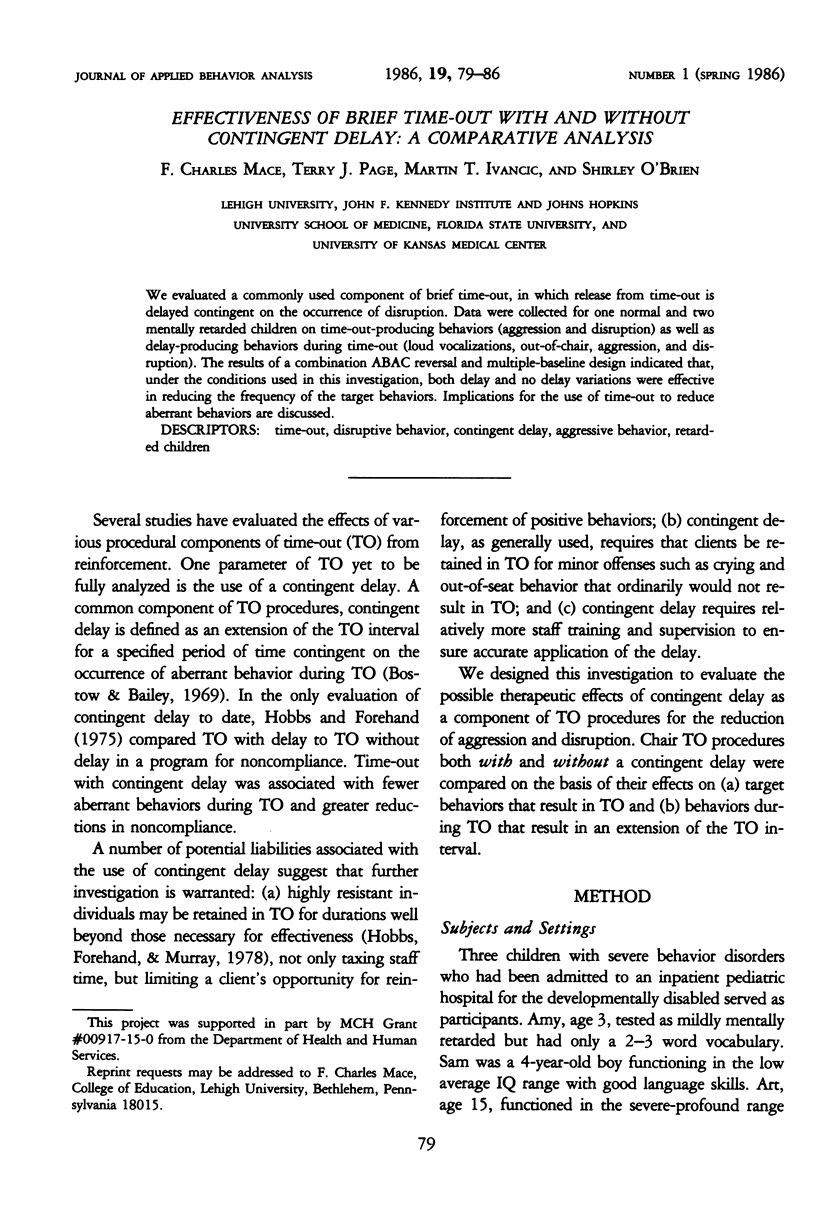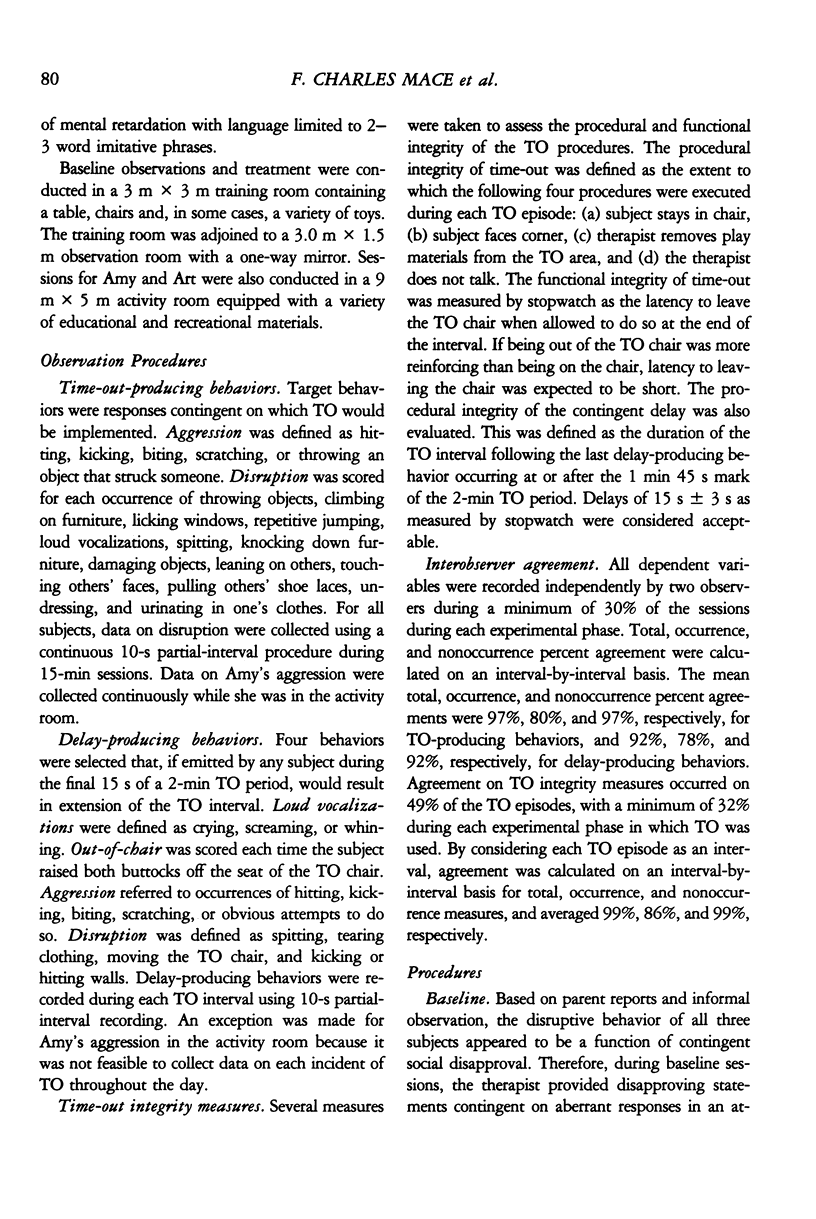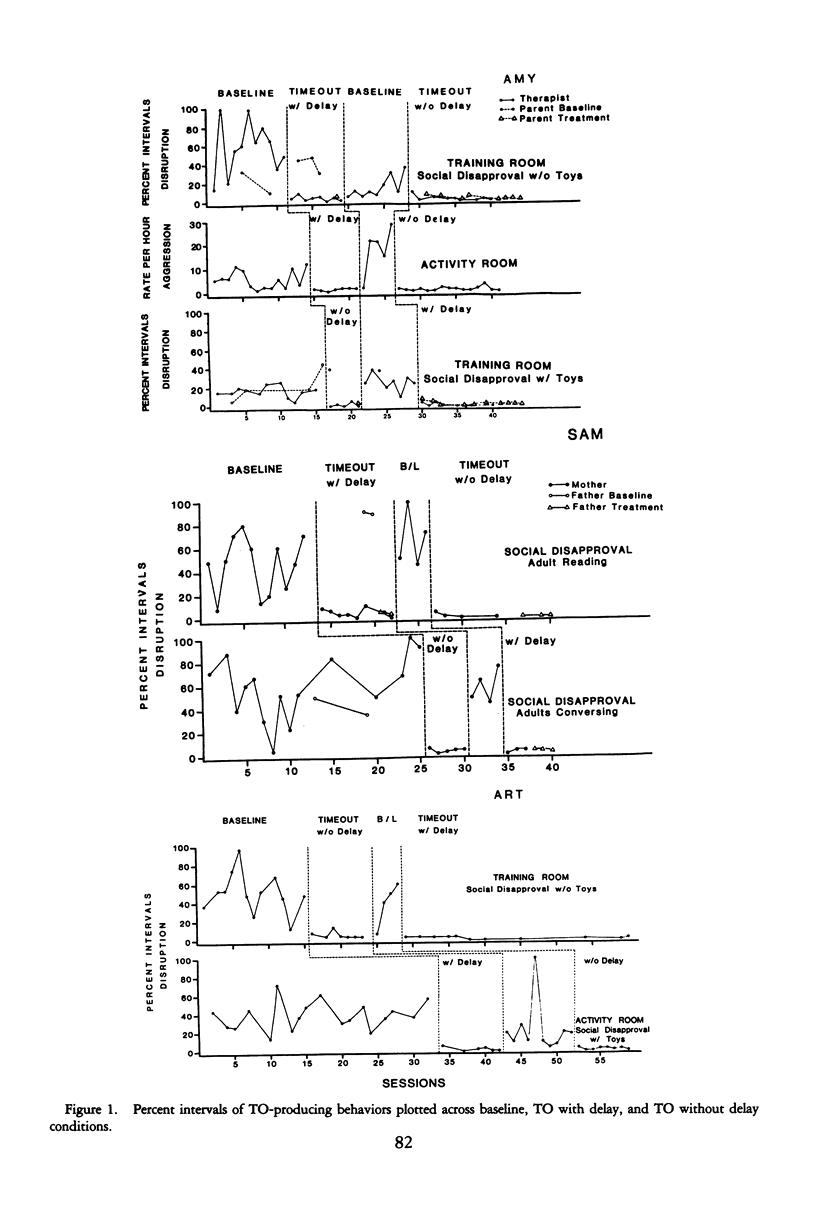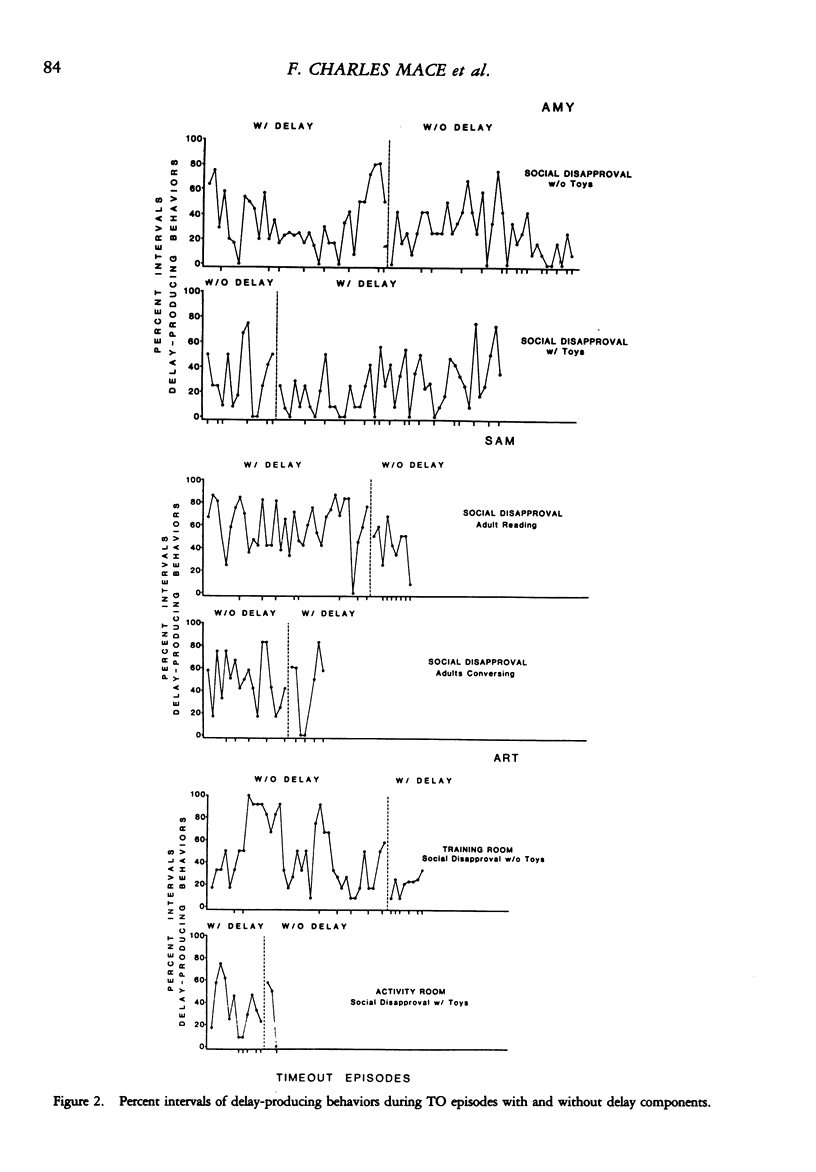Abstract
We evaluated a commonly used component of brief time-out, in which release from time-out is delayed contingent on the occurrence of disruption. Data were collected for one normal and two mentally retarded children on time-out-producing behaviors (aggression and disruption) as well as delay-producing behaviors during time-out (loud vocalizations, out-of-chair, aggression, and disruption). The results of a combination ABAC reversal and multiple-baseline design indicated that, under the conditions used in this investigation, both delay and no delay variations were effective in reducing the frequency of the target behaviors. Implications for the use of time-out to reduce aberrant behaviors are discussed.
Full text
PDF







Selected References
These references are in PubMed. This may not be the complete list of references from this article.
- Bostow D. E., Bailey J. B. Modification of severe disruptive and aggressive behavior using brief timeout and reinforcement procedures. J Appl Behav Anal. 1969 Spring;2(1):31–37. doi: 10.1901/jaba.1969.2-31. [DOI] [PMC free article] [PubMed] [Google Scholar]
- Foxx R. M., Shapiro S. T. The timeout ribbon: a nonexclusionary timeout procedure. J Appl Behav Anal. 1978 Spring;11(1):125–136. doi: 10.1901/jaba.1978.11-125. [DOI] [PMC free article] [PubMed] [Google Scholar]
- Murray G. C., Montiel M. M., Persellin R. H. A study of HLA antigens in adults with acute rheumatic fever. Arthritis Rheum. 1978 Jul-Aug;21(6):652–656. doi: 10.1002/art.1780210607. [DOI] [PubMed] [Google Scholar]


